Digitality in the Arts
How technologies are transforming scholarship, practice and archival work
by Alicia Dietrich, Cami Yates and Phil Rosenthal
Digitality in the arts is shaping both creation of new work and helping us uncover new insights about ancient architecture and art forms. In this roundup feature, we look at how technology is transforming our practices, scholarship and archival work in the arts. Artists and art historians use technologies to push the bounds of their work, even as they innovate and map out future applications for technologies. Digitality isn’t just transforming how we create art. When artists and scholars hold the tools of technology, they’re imagining what these technologies might do in the future and influencing and changing the technologies themselves.
Jump ahead to vignettes about
- Professor John Clarke's Oplontis Project
- Digitizing Hollywood Backdrops collection
- Assistant Professor of Practice Yuliya Lanina's digital animation Gefilte Fish
- Gesel Mason's digital archiving of Black choreographers
- Kristin Lucas's digital work in AR/VR and AI
- Jennifer Steinkamp’s digital mural EON in the Landmarks collection

Oplontis Project employs modern gaming technologies to allow users to access ancient Roman villa
Since 2005, Art History Professor John Clarke has co-led the Oplontis Project to document the excavation of two Roman villas (Villa A and Villa B) buried by the eruption of Mount Vesuvius in A.D. 79. A UNESCO World Heritage site, Oplontis is about 5 miles west of Pompeii in southern Italy.
So far, the project has yielded two born-digital publications about Villa A: Oplontis Villa A (“of Poppaea”) at Torre Annunziata, Italy: The Ancient Landscape and Modern Rediscovery (2014) and Oplontis Villa A: The Decorations: Painting, Stucco, Pavements, Sculptures (2019). Both volumes are open access, and users can access the publications by searching for “Oplontis Fulcrum” online in a web browser. Clarke and his collaborators have meticulously documented the excavated portions of the villa — 99 spaces in all — along with digital renderings of what the villa and grounds might have looked like in A.D. 79 as they’ve pieced together fragments of plaster frescoes or uncovered objects in their excavations.

Clarke and his collaborators are hard at work on a third volume focused on architecture, and the publication will include a fully navigable 3D model of Villa A. Using the popular game engine Unity, they’re working to offer users a rich experience of exploring the villa. Users will be able to navigate from room to room, and they can view the excavation site as it looks today or a digital re-creation showing how it looked in antiquity. They can even adjust lighting to see how the natural light changes as the sun moves through the villa’s spaces.
The 3D model is linked to a research database, offering access to thousands of cross-referenced records documenting the villa’s architecture and its contents. So, for example, if a user is digitally touring the villa, he or she could look at the object records for items uncovered in a space to see what is known about an object’s age, material and provenance. All of these data points help reveal insights about Mediterranean trade routes and cultural exchanges.
The third volume with the 3D model is slated for publication in 2024.
— AD

Digitization project will make historic Hollywood film backdrops accessible to fans around the world
Texas Performing Arts’ Hollywood Backdrop Collection has garnered international attention during the past few years, as interest has grown in this important art form. Thanks to generous support from donors, the collection will soon be available to view and explore online.
These assets make up the largest and most extensive educational collection of Hollywood motion picture backdrops in the world. Assistant Professor of Practice Karen Maness and Professor Emeritus Richard Isackes lovingly documented the history of the film backdrops in their award-winning publication, The Art of the Hollywood Backdrop (Regan Arts 2016). A cache of 68 historic paintings was generously donated to Texas Performing Arts by J.C. Backings and the Art Directors Guild Archives’ Backdrop Recovery Project.
The donation includes backings from iconic and critically acclaimed films such as National Velvet (1944), The Sound of Music (1965), Ben Hur (1959) and North by Northwest (1958). Following national coverage of the project on CBS’s Sunday Morning with Jane Pauley in February 2020 and two subsequent exhibitions hosted on the stage of Bass Concert Hall the following year, the Boca Raton Museum of Art opened Art of the Hollywood Backdrop in April 2022. The exhibition has attracted international media coverage, from The Wall Street Journal to The Times of London.
With generous support from Susan and Robert Morse, Texas Performing Arts is now digitizing the backdrops to make them even more widely available. A new website will launch in early 2023 and will serve as both digital archive and interactive teaching tool.
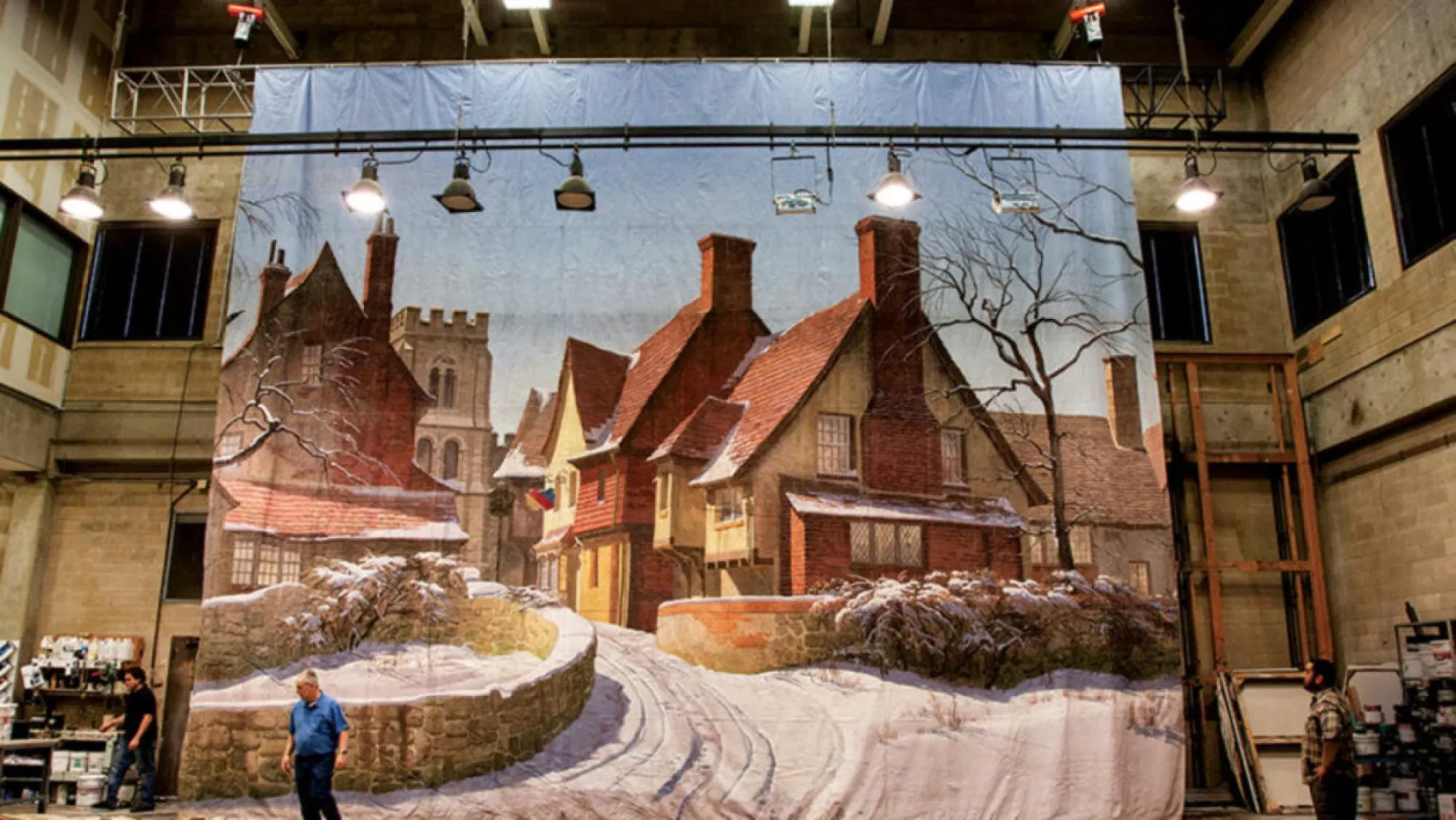
“It’s an exciting next step.” said Bob Bursey, Texas Performing Arts’ executive and artistic director. “Sharing the collection digitally will allow us to celebrate these masters of illusion and perspective while inspiring the next generation of artists with access to material never before available.”
The website will showcase the backdrops in high-resolution detail, amplifying and preserving the techniques of backdrop painting and restoration pioneered by Hollywood’s uncredited lead scenic artists. Texas Performing Arts has captured direct instruction from Hollywood’s top motion picture scenic artists Michael Denering, Joe Francuz and Donald MacDonald for the website.
While student training in these lost techniques continues in Texas Performing Arts’ Fabrication Studios, the digital archive will share detailed instruction for future caretakers about how to preserve, stabilize and restore these works as the project continues to expand. The digitization of the collection will also help contextualize the work by connecting the backdrops to the iconic films in which they were featured, reaching audiences around the world.
— PR
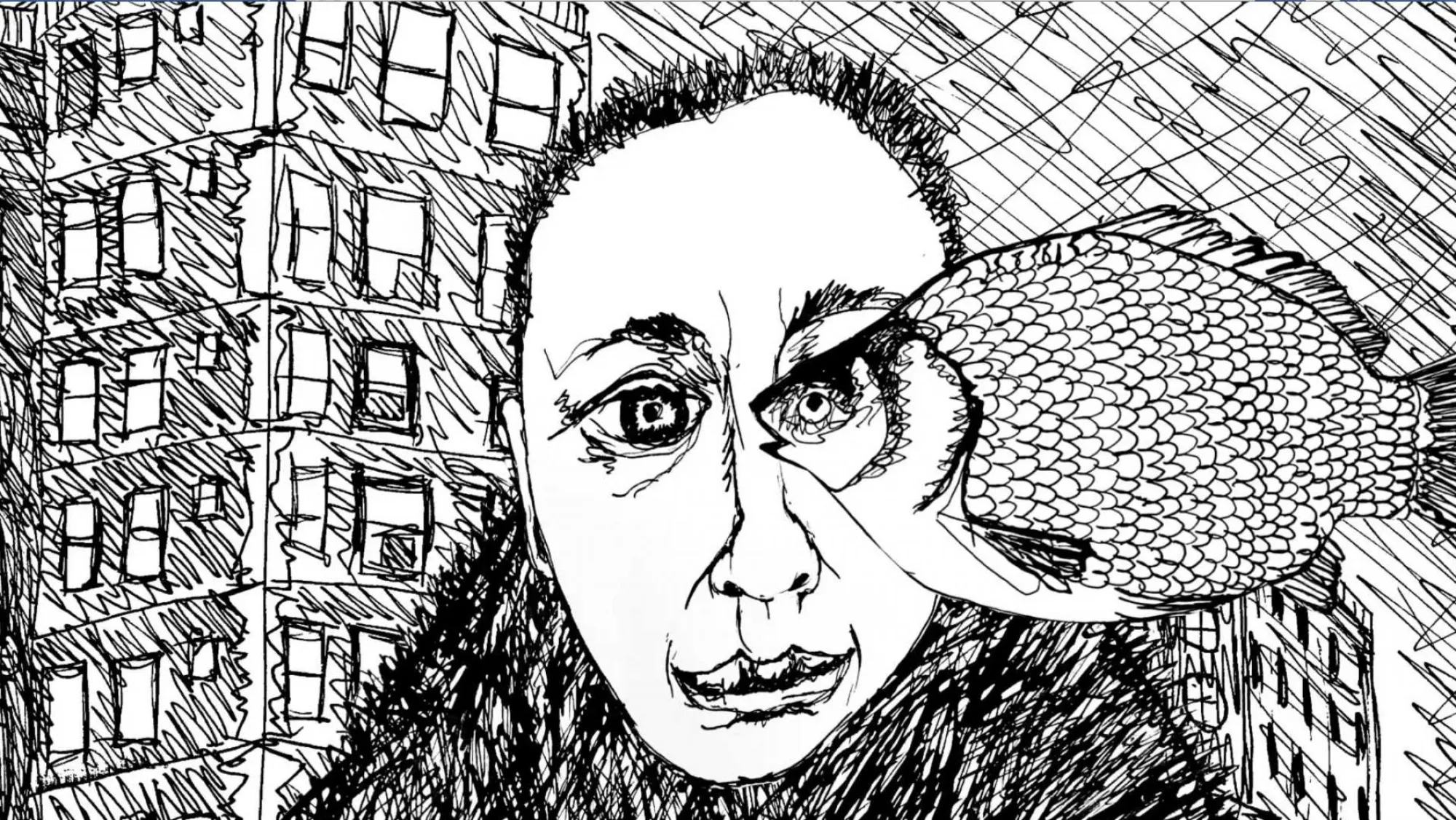
Yuliya Lanina explores intergenerational trauma from Holocaust in stop-animation film Gefilte Fish
Arts and Entertainment Technologies Assistant Professor of Practice Yuliya Lanina is an interdisciplinary artist whose work exists at the intersection of visual art, performance and technological innovation. She creates alternate realities in her works — ones based on sexuality, trauma, loss, fetishism and identity. A secular Jew of Ukrainian descent who was born and raised in Moscow, Lanina arrived in New York in 1990 as a political refugee. In the United States, she has established herself as a pioneering artist on the cutting edge of combining digital technologies with handmade media.

Lanina spent time in Vienna, Austria, in summer 2021 as a Fulbright fellow, where she conducted research on Viennese-born artist and architect Friedl Dicker-Brandeis, who died at Auschwitz in 1944. The experience unearthed some of her own family trauma around the Holocaust. In her work Gefilte Fish, she uses stop motion animation with her black-and-white ink drawings to explore the intergenerational trauma her family experienced from the genocidal killing of half of her father’s family during World War II. She collaborated with Sam Lipman, a lecturer in the Butler School of Music, to compose music and sound for the work.
“It’s about how hurt people end up hurting other people,” Lanina says of Gefilte Fish, “and how silencing the truth negatively affects generations to come.”
Gefilte Fish was presented at the Tricky Women/Tricky Realities in Vienna in 2021, and it was also shown as part the solo exhibition Yuliya Lanina: Guts at St. Edward’s University Fine Arts Gallery this past summer.
— AD
Gesel Mason creates a digital archive of Black choreographers’ work
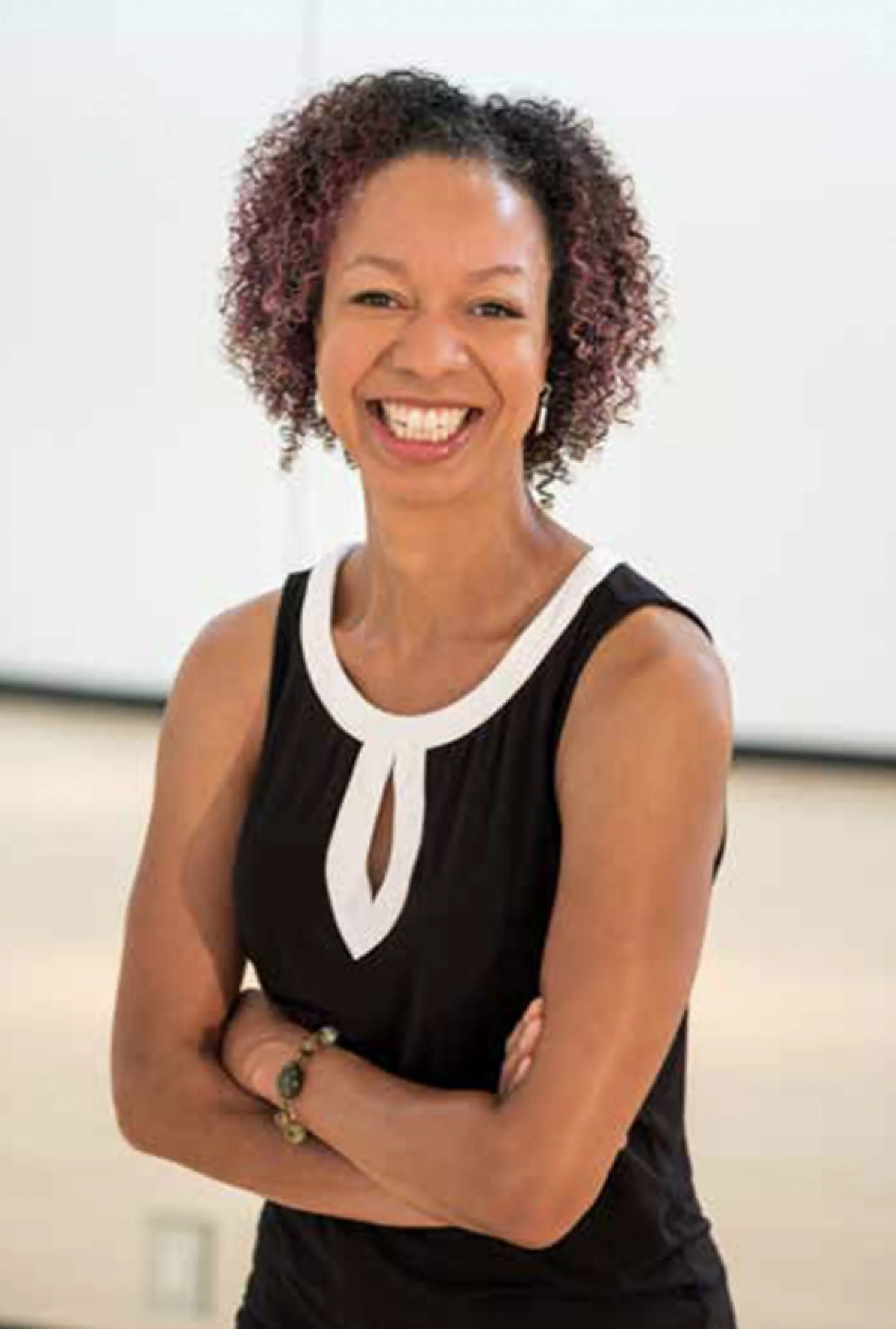
Associate Professor of Dance Gesel Mason is a choreographer, performer, producer and director passionate about celebrating and archiving African American choreographers. Her project “No Boundaries,” created in 2001, honors and celebrates the depth and diversity of style and vision in the field of Black choreographers of modern dance. Initially, Mason created an evolving archive through her own body, as she documented herself performing original and established solos choreographed by African American choreographers. She also captured additional footage of interviews with choreographers, many of whom were aging, about their work.
“With 15 years of choreography in body, I was wondering, how do I make this into an archive that moves beyond my body and into the digital realm?” Mason said. “How do we keep their stories alive in a way that is engaging and inviting when the body and live performance are no longer the vehicle for expression?”
In 2020, Mason connected with University of Alabama Associate Professor of Dance Rebecca Salzer to answer those questions. In December, the National Endowment for the Humanities (NEH) awarded them just under $100,000 to support their ongoing project, Prototyping an Extensible Framework for Access to Dance Knowledge.
Mason and Salzer are working with developer Whirli-gig to create a prototype for the digital archive using their open-source cataloguing software, Collective Access. Together, they are creating a prototype designed around the specific needs of the No Boundaries collection, with an eye towards possible applications for the dance artists and educators at large.
Their next stage is to present their prototype to a test audience and apply for more funding with the longterm goals of making sure the archive is sustained and maintained and to continue adding to the archive.
“I want to be sure that these stories get out there and that the dance and voices of Black choreographers are present in the archive,” Mason said. “We want to build this archive with those voices front and center.”
— CY
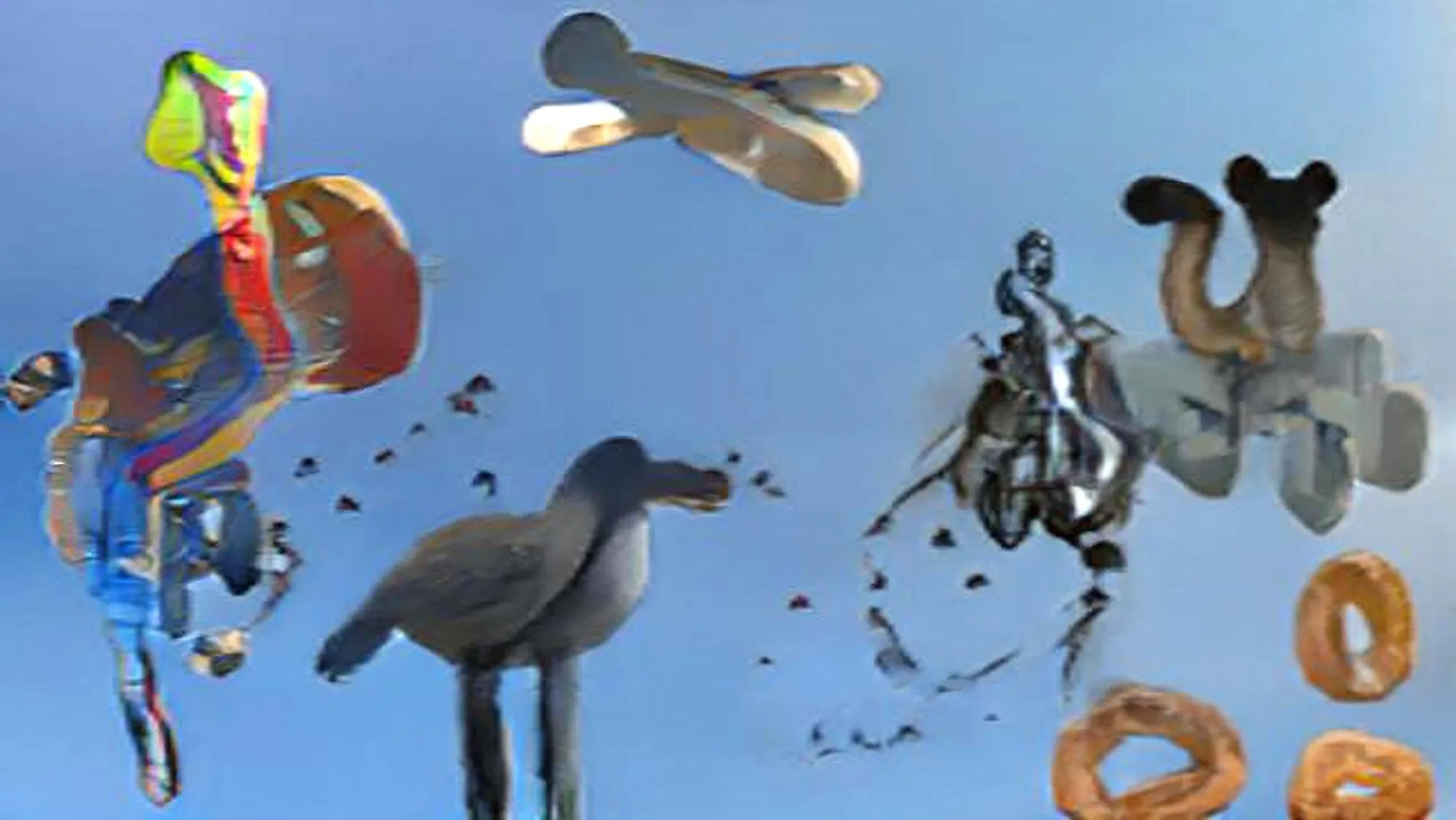
Transmedia professor explores unconventional uses of technology in her work
Studio Art Professor Kristin Lucas is an interdisciplinary artist who works with experimental media and technologies to create narratives. In recent years, she has worked on several iterations of her FLARMINGOS project, which uses AR/VR technologies to allow users to engage with virtual flamingos while learning about the fragile plight of these popular birds.
Lucas said she’s not an expert coder, but she’s interested in working with systems in unexpected ways to reach wide audiences.
“I love making work that is live and that is always changing, that is never the same twice,” Lucas said. “I find ways to use the tools to tell a story that is philosophical or include audience participants in the conversation.”
Lately, she has been experimenting with generative works that incorporate machine learning to create unexpected outputs. Last year, she created a video animation called What if birds wish they could run? that explores machine learning and the perils of miscommunication.
Lucas is also working on new iterations of her FLARMINGOS project for the group exhibition I’ll Be Your Mirror: Art and the Digital Screen at the Modern Art Museum of Fort Worth, and she has been invited to participate in the Jing’an International Sculpture Project in Shanghai.
— AD
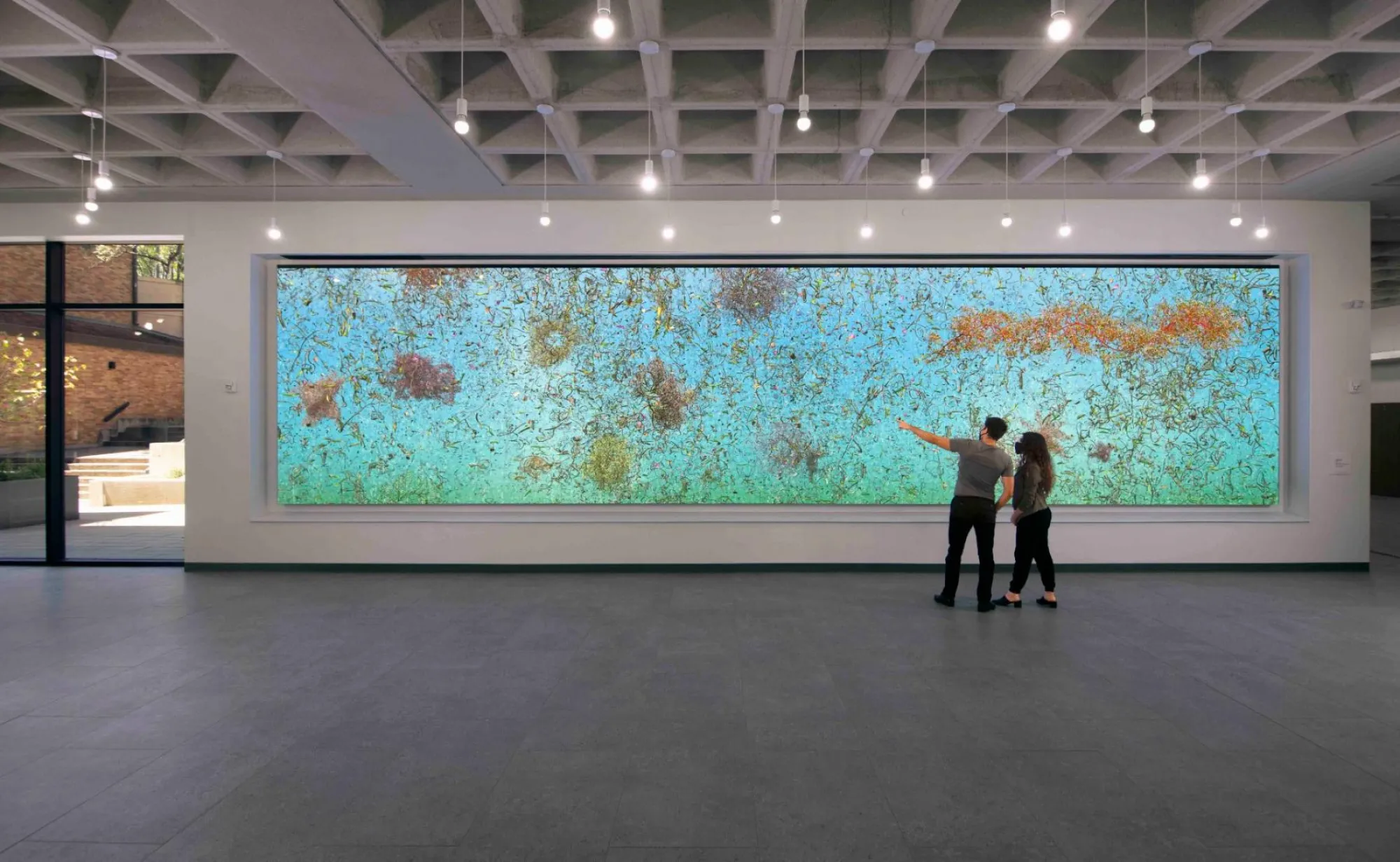
Jennifer Steinkamp’s EON draws inspiration from nature in building devoted to biological sciences
In 2017 the university began a major renovation of Welch Hall, UT’s largest academic facility occupied by the College of Natural Sciences. Within the building, students and faculty members research different areas of biology, chemistry, biophysics and data sciences. Landmarks, UT’s public art program, commissioned a signature work of art for the space to reflect this activity.
Landmarks Founding Director and Curator Andrée Bober engaged artist Jennifer Steinkamp, a pioneer in digital imaging who draws inspiration from the natural world, to create a large-scale installation.
“Jennifer Steinkamp is singular in her ability to harness technology,” Bober said. “She’s a master of digital media, and her installations make us think about our relationship to nature in entrancing ways.”
Steinkamp’s EON is the fourth digital installation in Landmarks’ collection, joining those by James Turrell, Monika Bravo and Ben Rubin. It measures 30 feet by 9 feet and illuminates Welch Hall’s main corridor with an underwater “primordial soup” of organisms in constant movement. The work uses 70,000 rendered frames arranged in dense layers, with the seemingly random movements of the organisms that sink, float, bounce and roll like aquatic tumbleweeds.
Although none of the organisms is based on real-life plants or other living organisms, they look like they could be. Steinkamp thought about the beginning of life on our planet and drew inspiration from the concept of symbiosis, a theory that explains the mutual cooperation and independence of unlike organisms as essential to the evolution of life forms.
— AD

